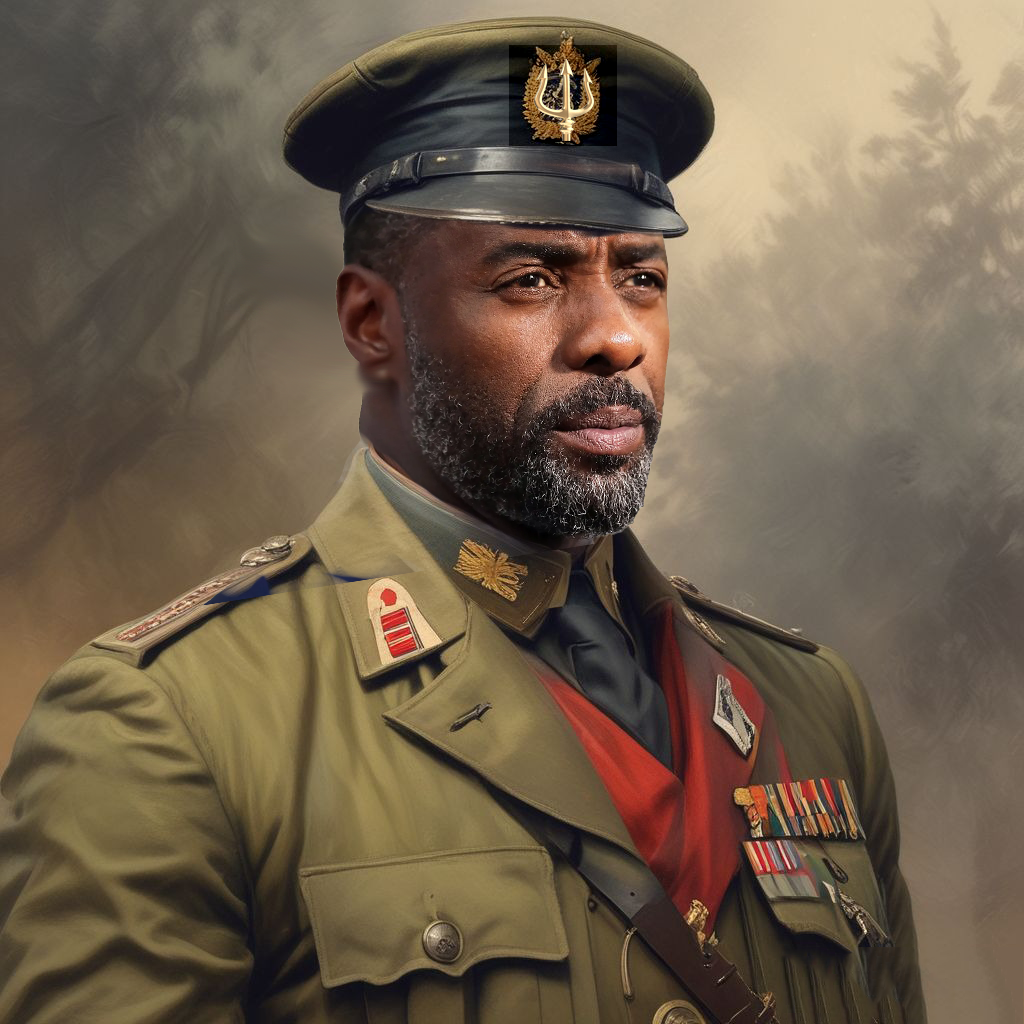In Ilium Ridge, Colonel Odysseus plays much the same part as in Homer’s Iliad, serving mainly as the mediator between sworn enemies Achilles and Agamemnon, but he goes further in becoming the real power in the Achaean ranks, constantly striving to make the incompetent, but well-born, Agamemnon look like the leader he believes he was born to be. And of course he (inspired by his beloved patron God Poseidon) is the author of the Ridge’s ultimate fate.
For some reason, I have only ever pictured Idris Elba in this role. Odysseus’ combination of charisma and authority, while remaining in the background silently controlling events, seems well suited to that actor’s range and emotional depth. More cynically, of course, films these days require a certain degree of “diversity”, which was in reality almost totally lacking (except for some honorary Indian princes) in the English officer corps of the Great War. The colonials, especially those who did not resemble the accepted picture of an Englishman, had no chance of rising to anywhere near the rank of colonel.
But this story is as much about the world of 1200BC as about 1917AD. And in that world racial distinctions, which were invented in the 18th and 19th centuries to justify European imperialism and slavery, had not yet poisoned the political landscape. Of course there were other distinctions just as strong: sex, class, wealth etc., which we are also still dealing with today. But there was no sense that the people of some far-off land were in some way inferior, just because their skin tone or hair texture or facial features differed from the European norm. Had Nubia found itself part of the Achaean coalition aginst Troy, no one would have questioned King Alara’s colour, or that of his troops. As the Gods point out in Ilium Ridge, maybe some things were better back then.
Of course Odysseus is known not only from the Iliad. In the Odyssey, Homer gives him a starring role, as he spends another 10 years trying to get back from Troy to his loving wife Penelope, encountering gods, monsters and divine seductresses on the way. His tale has been adapted and re-interpreted many times in countless media. Some examples in literature:
Ulysses (1922) by James Joyce – Perhaps the most famous literary adaptation; maps Homer’s structure onto a single day in Dublin.
The Odyssey: A Modern Sequel (1938) by Nikos Kazantzakis – A sequel describing new adventures.
The Penelopiad (2005) by Margaret Atwood – Retells the story from Penelope’s and her maids’ perspectives.
and in film:
The Odyssey (1911) – The first epic silent film adaptation.
Ulysses (1954) – Starring Kirk Douglas as Ulysses; a classic sword-and-sandal film retelling.
L’Odyssée (1968) – An excellent European miniseries by Franco Rossi.
The Odyssey (1997) – Starring Armand Assante; a faithful, visually ambitious TV adaptation.
O Brother, Where Art Thou? (2000) – Directed by the Coen Brothers; a modern reimagining set in Depression-era America.
Hopefully the new Christopher Nolan version will spark a interest in all things Homeric.

Leave a Reply